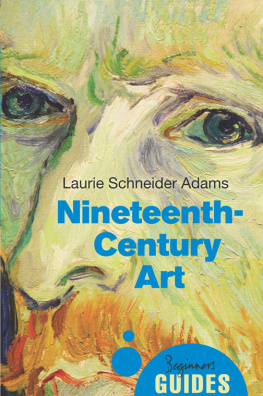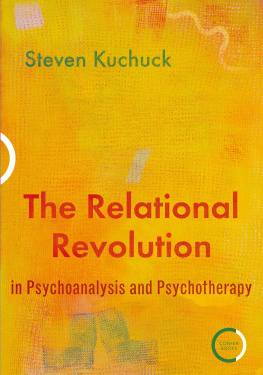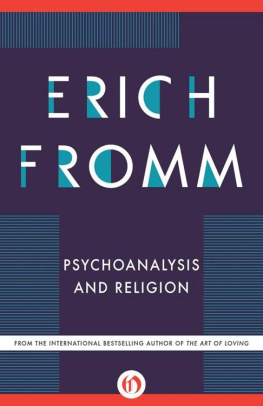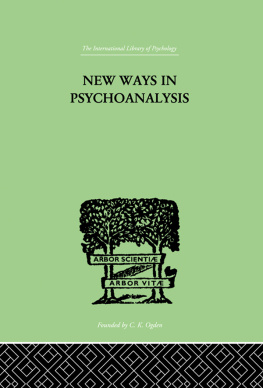Laurie Schneider Adams - Art And Psychoanalysis
Here you can read online Laurie Schneider Adams - Art And Psychoanalysis full text of the book (entire story) in english for free. Download pdf and epub, get meaning, cover and reviews about this ebook. year: 2018, publisher: Routledge, genre: Detective and thriller. Description of the work, (preface) as well as reviews are available. Best literature library LitArk.com created for fans of good reading and offers a wide selection of genres:
Romance novel
Science fiction
Adventure
Detective
Science
History
Home and family
Prose
Art
Politics
Computer
Non-fiction
Religion
Business
Children
Humor
Choose a favorite category and find really read worthwhile books. Enjoy immersion in the world of imagination, feel the emotions of the characters or learn something new for yourself, make an fascinating discovery.

- Book:Art And Psychoanalysis
- Author:
- Publisher:Routledge
- Genre:
- Year:2018
- Rating:4 / 5
- Favourites:Add to favourites
- Your mark:
- 80
- 1
- 2
- 3
- 4
- 5
Art And Psychoanalysis: summary, description and annotation
We offer to read an annotation, description, summary or preface (depends on what the author of the book "Art And Psychoanalysis" wrote himself). If you haven't found the necessary information about the book — write in the comments, we will try to find it.
Art And Psychoanalysis — read online for free the complete book (whole text) full work
Below is the text of the book, divided by pages. System saving the place of the last page read, allows you to conveniently read the book "Art And Psychoanalysis" online for free, without having to search again every time where you left off. Put a bookmark, and you can go to the page where you finished reading at any time.
Font size:
Interval:
Bookmark:

Art and Psychoanalysis
LAURIE SCHNEIDER ADAMS

A hardcover edition of this book was published in 1993 by Icon Editions
First paperback edition published 1994 by Westview Press
Published 2018 by Routledge
711 Third Avenue, New York, NY 10017, USA
2 Park Square, Milton Park, Abingdon, Oxon OX14 4RN
Routledge is an imprint of the Taylor & Francis Group, an informa business
ART AND PSYCHOANALYSIS. Copyright 1993 by Laurie Schneider Adams.
All rights reserved. No part of this book may be reprinted or reproduced or utilised in any form or by any electronic, mechanical, or other means, now known or hereafter invented, including photocopying and recording, or in any information storage or retrieval system, without permission in writing from the publishers.
Notice:
Product or corporate names may be trademarks or registered trademarks, and are used only for identification and explanation without intent to infringe.
The Library of Congress has catalogued the hardcover edition as follows:
Adams, Laurie Schneider
Art and psychoanalysis / Laurie Schneider Adams.
p. cm.
Includes bibliographical references and index.
ISBN 0-06-430297-0
1. Psychoanalysis and art. I. Title.
N72.P74A32 1993
701.05dc20
92-56205
ISBN 13: 978-0-06-430206-7 (pbk)
Designed by Abigail Sturges
Publishers Note
The publisher has gone to great lengths to ensure the quality of this book but points out that some imperfections from the original may be apparent.
The purpose of this book is to present an overview of the interdisciplinary potential of art and psychoanalysis, and to demonstrate that each field can enrich and enlarge the other. This is not intended to be a definitive study, but rather a series of related essays exploring some of the ways in which psychoanalytic insights elucidate creativity and its products. I survey a few of the quarrels between art historians and psychoanalysts over methodology and also apply psychoanalytic readings to works of art and artists from iconographic, textual, biographical, and aesthetic points of view. Clinical and other asides that are explanatory or that illustrate theoretical material are set apart from the main text and printed in italics. Unless otherwise indicated, clinical examples are taken from my own psychoanalytic practice.
My focus is historical as well as methodological and therefore emphasizes the contributions of Freud as the foundation of most psychoanalytic thinking. Readers will also note numerous references to classical antiquity and observations on the relationship between child development and creativity. This is because psychoanalysis at its bestwhether as a clinical procedure or a method of cultural interpretationhighlights the relevance of past to present. Classical psychoanalysis subscribes to the principle that knowing history helps to prevent repeating the worst of it and offers the hope of a better-informed future.
Wisdom, according to Socrates, is knowing that you dont know what you dont know. Imagine how different history might have been if Oedipus had known that he did not know the identity of his real parents.
* * *
Friends and colleagues have contributed to this effort, and I am extremely grateful to them for their generosity. Bradley Collins and Mary Wiseman reviewed the entire manuscript with a fine-tooth comb and offered many valuable suggestions. Leo Steinberg lent his expertise to the Michelangelo chapter, and, although we do not agree on every particular, he has saved me from several egregious errors. Other parts of the manuscript were read by John Adams, Paul Barolsky, James Beck, Larissa Bonfante, Sidney Geist, Wendy Lehman, Carla Lord, Ildiko Mohacsy, Muriel Oxenberg Murphy, and Maria Grazia Pernis. I thank them all for their observations. The enthusiasm of the students in my 1990 and 1991 City University of New York seminars on art and psychoanalysis, as well as on artists biographies and autobiographies, helped to fertilize the research for this book.
Assistance with photographs was generously provided by James Beck, Sidney Geist, Duane Hanson, Carroll Janis, George Segal, and the museums and galleries that allowed their works to be illustrated. Finally, without the support and encouragement of my editor, Cass Canfield, Jr. and his assistant Bronwen Crothers, this book would not have seen the light of day.
Art and Psychoanalysis
Art history and psychoanalysis have been married and divorced several times in the past hundred years. On the face of it, these are two fields that ought to get along. Both are concerned with creativityart history rather more with the products of creativity, psychoanalysis with its process. Both are concerned with imagerypsychoanalysis with the imagery of dreams and fantasies, art history with imagery as a material product of the artist. Finally, both fields require a historical approachart history to chronologies of culture, documentation, and style, and psychoanalysis to the developmental history of the individual.
The first marriage of these two fields took place in the late nineteenth century, when Sigmund Freud began the work that culminated in the formulation of psychoanalysis. Even before Freud, however, nineteenth-century artistsGoya, Fuseli, and the Symbolists, for examplehad depicted states of mind and dreams as internal rather than external phenomena, and Walter Paters descriptions of Renaissance art reflected a new awareness of the psychology of the artist and the personal link between artists and their work.
Also antedating psychoanalysis was archaeology. The ruins of Herculaneum had been discovered in 1738 and those of Pompeii ten years later. In 1821, Jean-Franois Champollion revealed the meaning of Egyptian hieroglyphs by deciphering the text of the Rosetta Stone. Heinrich Schliemanns study of Homer led to the excavation of Troy and Mycenae in the 1870s. And in the early twentieth century, Sir Arthur Evans discovered the ruins of Minoan Crete. Historical research and discovery were thus very much in the air as Freud began his exploration of the human mind toward the end of the nineteenth century. He had been eminently well prepared for this endeavor by a classical education, which included a knowledge of Greek and Latin. Like Socrates, Freud devoted his life to the pursuit of self-knowledge. The command Gnothi seauton (Know thyself), inscribed in stone at the site of the Delphic oracle, became Freuds guiding principle, just as it had been that of Socrates.
In the course of the 1890s, Freud embarked on the landmark adventure of his own self-analysis,
Freuds archaeological self-analysis laid the foundations for his subsequent work, and his knowledge of Greek and Roman mythology fortified him in these labyrinthine byways. Mythology, he wrote in 1926, may give you the courage to believe psychoanalysis. By the process of association, Freud followed his thoughts back in time to his childhood. There he located three cornerstones of psychoanalysis: infantile sexuality, the power of the unconscious, and the Oedipus complex. Like the great humanists of the Renaissance, Freud had recourse to classical examples to illustrate and validate his ideas. He recognized the expression of the Oedipus complex in the work of Sophocles, narcissism in the myth of Narcissus, and Eros, or the life force of the libido (a Latin term), in the Greek god of love.
Next pageFont size:
Interval:
Bookmark:
Similar books «Art And Psychoanalysis»
Look at similar books to Art And Psychoanalysis. We have selected literature similar in name and meaning in the hope of providing readers with more options to find new, interesting, not yet read works.
Discussion, reviews of the book Art And Psychoanalysis and just readers' own opinions. Leave your comments, write what you think about the work, its meaning or the main characters. Specify what exactly you liked and what you didn't like, and why you think so.









